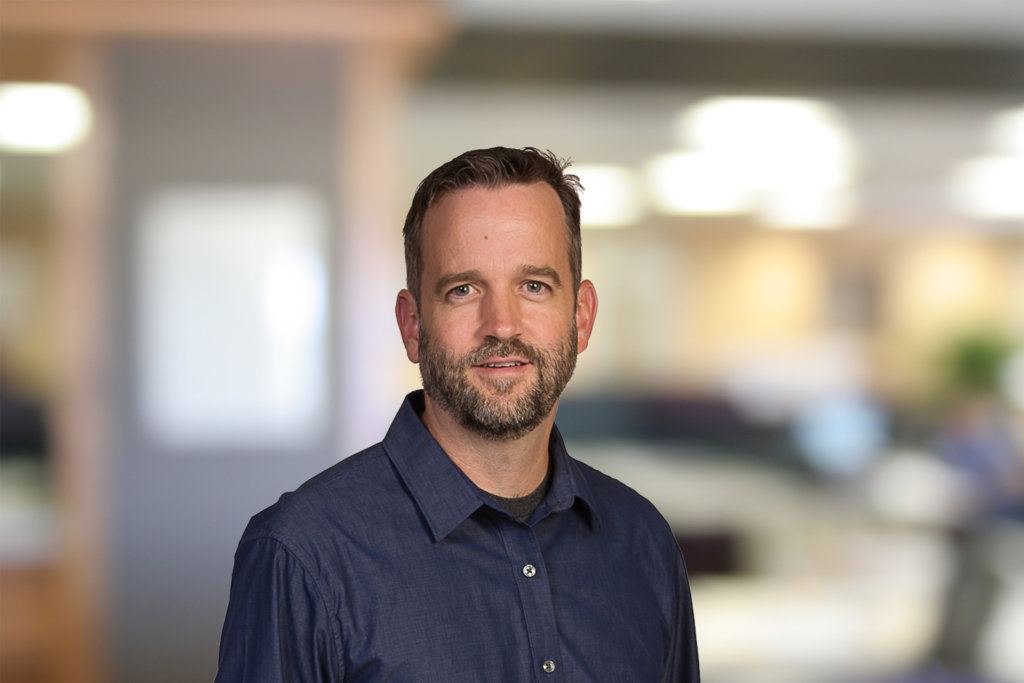
This month we sat down with SGA Principal, Travis Hager, to talk technology and sustainability.
Everything about retail is changing, from how we shop to requirements for new buildings to what retailers need in their buildings. How do you keep up with the ever-changing needs in retail architecture today?
I attend conferences, read industry news, and talk to peers, consultants, and experts to keep up with the latest trends and building requirements. I also actively participate with our clients in analysis of their business to help propose solutions to fit their evolving goals and needs. Keeping up with and embracing today’s trends gives us more insight into what our clients will need tomorrow. Whether that’s an AI-driven facility or a more personalized customer experience, I look forward to figuring out what’s next.
We live in an age of daily technology advancements. How are these advancements affecting retail architecture and client expectations?
The recent advancements we have seen in the AEC industry are long overdue. There are now more opportunities than ever to serve our clients throughout the entire life cycle of a building. An architect’s job doesn’t necessarily end once a project is built and occupied. The rapid pace of technological advances with the Internet of Things (i.e. occupancy sensors, building automation systems, equipment performance), predictive learning, and augmented reality allow us, as the authors of the project’s digital twin, to help ensure our client’s facilities remain relevant and respond to changing needs.
As we move forward, how do you see sustainability affecting retail architecture?
Often a more sustainable option than developing new buildings is to lengthen a building’s lifespan. With the pursuit of energy neutrality in today’s “smart buildings,” continual advances in technology enable clients to better maintain their facilities over a longer period of time. We have also seen advances in technology where building owners have real-time insight resulting in rapid adaptability. A great example of this is improving a building’s performance through the use of machine learning.
In addition to growing up on a farm, you had a variety of jobs while attending school. What were some of the lessons you learned that have helped you throughout your career?
Growing up on a farm was hard work, but the greatest takeaway might be an overall respect for living things and establishing a good work ethic. When I was framing houses, I learned to appreciate attention to detail. As a masonry laborer, I grew to understand the importance of the processes that were in place. While on the railroad…well, that was just hard manual labor, but with a crew of only four, I quickly began to value the importance of teamwork and being versatile. The one thing that all these experiences had in common was that hard work and care in what you do will yield the best results.
What does life outside of work look like for you?
It’s very important to me to maintain a healthy work-life balance. I remember the first time I was asked about the priorities in my life. God, family, work. That’s the order, and it’s that simple. As long as I keep that in check, everything seems to work out just fine.
